Ideas To Start and Enhance Your Program.
Employee recognition is a crucial aspect of building a positive and productive workplace. Recognizing and rewarding hard work, dedication, and achievements can boost morale, increase motivation, and show employees that their contributions are valued. Whether you’re just starting a recognition program or looking to enhance your existing one, here are some ideas to help you get started. Recognizing and rewarding your employees are key to your program’s success!
Are Employee Recognition Programs Effective?
Employee recognition programs can be highly effective in promoting a positive work environment and increasing employee engagement. Studies have shown that employees who feel valued and appreciated are more likely to be motivated, committed, and productive. Recognition programs can also help build a positive company culture and foster a sense of community among employees. Additionally, effective recognition programs can lead to increased job satisfaction and reduced turnover, which can result in significant cost savings for companies. While the effectiveness of recognition programs can vary based on the specific program design and implementation, when executed well, they can have a significant impact on employee engagement and satisfaction
Recognition programs bring numerous benefits to both employees and the company, including:
The Power of RecognitionRecognition programs has a powerful impact on employee productivity, creating a work environment that motivates and supports employees. Here are just a few of the ways that recognition programs can drive productivity:
Creates Motivation- Recognizing employees for their achievements and hard work can be a major motivator, driving employees to perform at their best. When employees feel valued, they are more likely to be engaged and committed to their work.
Morale Booster- Recognition programs have a positive effect on employee morale, creating a more positive work environment and fostering a sense of camaraderie and belonging.
Drive Employee Engagement- Recognition programs offer opportunities for employees to receive feedback and recognition for their contributions, as well as for them to recognize the contributions of their peers. This helps to engage employees and keep them motivated.
Quality Work – Recognition programs set clear expectations and reward employees for their accomplishments, encouraging employees to produce high-quality work.
Improved Brand Culture – Organizations that are known for valuing their employees and promoting a positive work environment are often more attractive to job seekers and customers, which can enhance the organization’s overall reputation.
Boosted Morale: Recognition programs create a more positive work environment and foster a sense of belonging and camaraderie among employees. An employee recognition program increases employee morale motivates the rest of the staff and helps firms retain top talent. When your staff chooses the appropriate employee recognition program, your company’s success is valued and appreciated.
Improved Engagement: Recognition programs engage employees by providing opportunities for feedback and recognition, both for their contributions and those of their peers.
High-Performance Encouragement: Recognition programs set clear expectations and reward employees for their accomplishments, driving high performance.
Employee Retention: When employees feel valued and recognized for their contributions, they are less likely to leave the company, reducing turnover and improving productivity.
Increase Customer Satisfaction: Employees’ satisfaction drives customer satisfaction. You have all heard that employees who enjoy the job and employers also try hard to keep their customers satisfied. Therefore, recognizing a team of employees is directly affecting their customer experience.
Different Ways to Recognize Employees
Private Recognition:
Private recognition refers to a form of employee recognition that is personalized and individualized. Unlike public recognition, which is often used for group or team awards, private recognition is designed to recognize individual employees for their achievements and contributions. Private recognition can take many forms, such as a personalized note of appreciation, a one-on-one meeting with a supervisor, or a small gift or award.

Private recognition can be especially valuable for employees who prefer a more personal touch or who may not feel comfortable with public recognition. It allows managers and supervisors to tailor recognition to the specific needs and preferences of individual employees, making it a more meaningful and effective way to recognize and reward achievement. Additionally, private recognition can help build strong relationships between managers and employees, and foster a sense of trust and respect.
Social Employee Recognition
Social recognition is a type of employee recognition that leverages the power of social networks and communities to celebrate and reward employee achievements. This type of recognition uses digital platforms, such as the company intranet or social media, to publicly acknowledge and celebrate employee accomplishments.
To make social recognition effective, it’s important to encourage employee participation by providing regular and meaningful opportunities for recognition, and by making it easy for employees to share their achievements. You should also be mindful of the tone and content of your recognition efforts, and ensure that they align with your overall values and culture.
Peer To Peer Recognition
Peer To Peer recognition is a type of employee recognition that involves acknowledging and rewarding employees for their hard work and achievements, as chosen by their peers. This type of recognition encourages employees to support one another and helps to foster a sense of community and collaboration within the workplace.
Peer To Peer recognition programs can take many forms, from simple voting systems where employees nominate and vote for their peers, to more structured programs that involve a review and selection process. To be effective, they should be transparent, fair, and meaningful, and should provide opportunities for employees to recognize and reward one another for their contributions and achievements.
The key benefits of this type of recognition strategy are that it promotes a sense of camaraderie and collaboration among employees, and encourages employees to support one another in their efforts. It also provides employees with a sense of ownership and control over the recognition process and can help to build a positive workplace culture.
To get the most out of your peer recognition program, it’s important to communicate the program’s goals and expectations clearly to employees and to provide them with the tools and resources they need to participate. You should also be mindful of the tone and content of your recognition efforts, and ensure that they align with your overall values and culture.
Types of Employee Programs
There are many types of employee recognition programs and initiatives aimed at improving employee engagement and satisfaction in the workplace. Some examples include:
Work Anniversary
Recognize your employee for their years of service, starting with their 1st work anniversary and then incrementally as appropriate. Common recognition is at, 3 years, 5 years, and then every 5 years of service.
Safety
Recognizing employee safety is an important way to reinforce the importance of workplace safety and to encourage employees to continue following safe practices.
Performance
Recognizing employee performance is a critical component of creating a positive work environment and achieving organizational success. Recognizing and rewarding employees for performance can reinforce employee motivation, retention, improved morale, and increased productivity.
Employee Health And Wellness Programs
Companies encourage employees to prioritize their health and wellness by offering programs like gym memberships, healthy snack options, and stress management workshops. Here are some promotional ideas that will help promote and support.
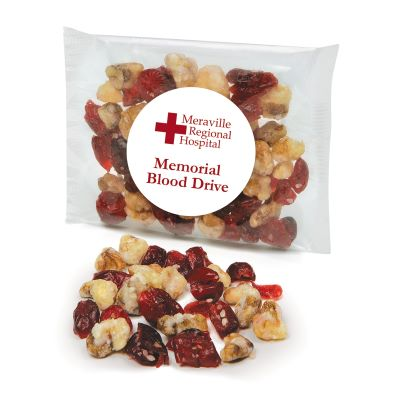
A few Employee Recognition Ideas for You:
There Are Many Different Ways That Companies Can Recognize And Reward Their Employees. Some Of The Most Common Include:
Awards –
Awards are traditional recognition and can be tailored to the individual recipient, such as certificates, trophies, crystal, and plaques.
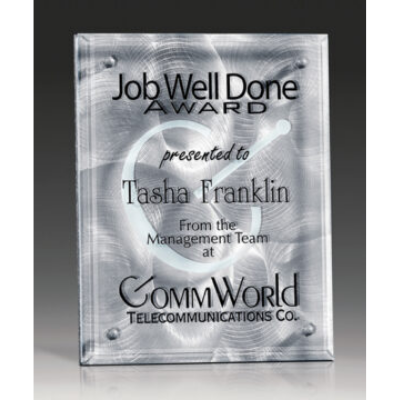
Paperweights –
Paperweights may be small in size, but pack plenty of punch. They have perceived value and can be etched to give them an elevated look and feel.
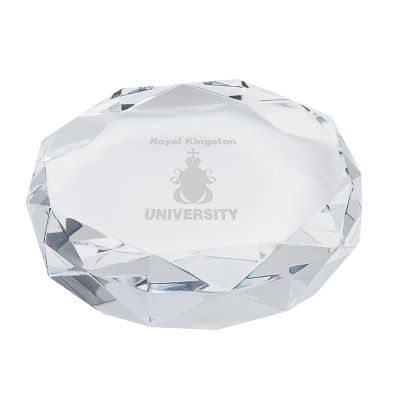
Crystal – Bowls, Vases, Drinkware

Merchandise
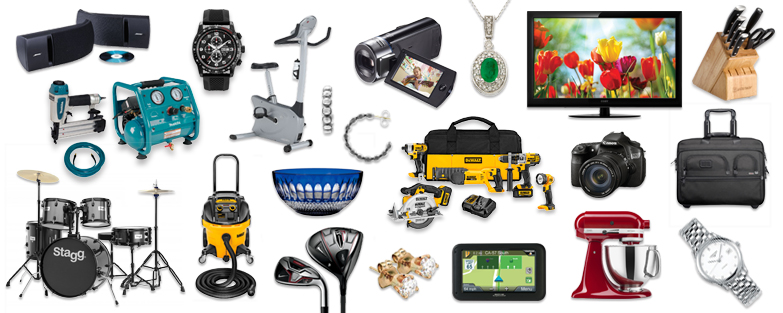
Merchandise lifestyle gifts for your employee recognition program can provide a personal touch. While they generally do not carry your brand, they will have a positive impact on your employee. The program lets them choose a lifestyle gift they want and will use, and would most enjoy receiving. This can also provide a great employee recognition platform for motivation, incentives, sales, work anniversaries, and rewarding your employees.
Employee Appreciation Gifts:
This employee program can help build your brand and company culture, and show your employees how much you appreciate and value their contribution to your business’s success. Customized Apparel, branded tech accessories, pens, coffee mugs, tumblers, and tote bags are some of the more popular ideas. With thousands of products to choose from, let us help suggest products and ideas that best fit your employee profile.
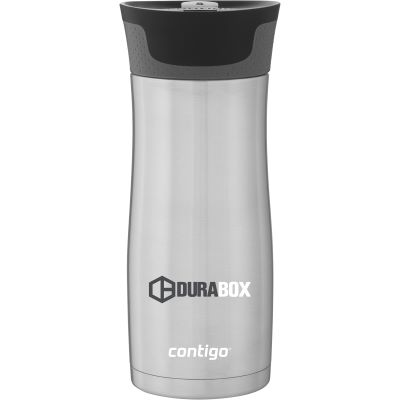
Work Anniversaries – Traditional programs for employee recognition are to recognize them on their work anniversary. Items such as lapel pins, bracelets, charms, watches, key holders, and other jewelry items. These personal items have your brand along with the number of years and often added precious stones such as ruby, sapphires, and diamonds.
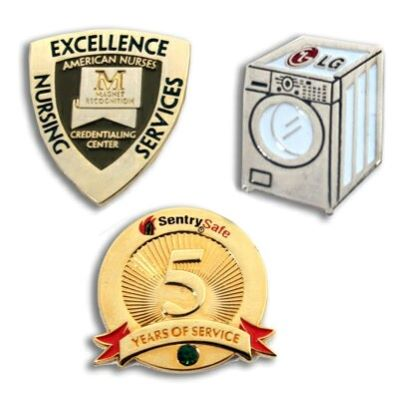
Today’s Work Anniversary items can include more modern awards
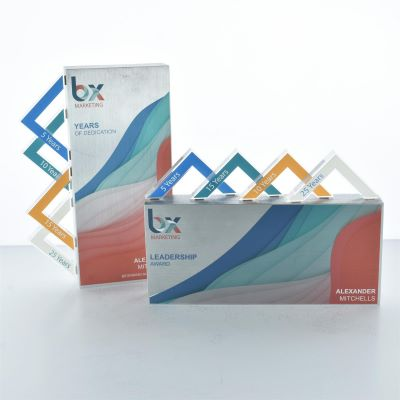
Years of Service Awards and Recognition
Awards come in a wide variety of styles, materials, and price points. Let us come up with suggestions for appropriate awards for your employee recognition program.
Team-Building – Employee recognition programs can also play a key role in team building. By recognizing individual achievements and contributions, employees can feel more connected to one another and proud to be part of a cohesive and high-performing team.

Recognition programs can also provide opportunities for team members to come together and celebrate each other’s successes, strengthening relationships and promoting a positive team dynamic. Team building activities can be supported with theme-imprinted apparel items such as t-shirts, hoodies, caps, and pullovers.
Surprises – Adding an element of surprise to an employee recognition program can make the experience even more memorable and special for the recipient. Surprise recognition can take many forms, such as unexpected bonuses, public announcements, or special gifts.
Incorporating surprise recognition into your employee recognition program can also help to keep employees motivated and engaged, as they never know when they might receive recognition for their hard work.
Things To Consider
What Are Some Challenges Of Employee Recognition Programs?
Lack of participation – If employees don’t see the value in the program, or if it’s not well-communicated, it may not be well-received, and participation levels may be low.
Unfairness – Employees may feel that recognition is being distributed unfairly, or that certain employees are favored over others.
Budget constraints – Recognition programs can be costly, and companies may not have the resources to offer a comprehensive program that covers all employees.
Lack of personalization – A one-size-fits-all approach to recognition may not be effective, as different employees may have different preferences and motivations.
Resistance to change – Implementing a new program may be met with resistance from employees who are used to the old way of doing things.
Maintaining the momentum and excitement – Another challenge is maintaining the momentum and excitement of the recognition program over time. Initially, employees may be excited and motivated by the program, but over time, interest may wane, and employees may become less engaged with the program. To overcome this challenge, consider the frequency of communication and recognition with your employees. Monthly recognition, surprise recognition, monthly or quarterly branded merchandise with your theme, and communications from the upper management or even the President of your organization, are just a few ways to keep the momentum and excitement going.
How Do You Get The Employees To Participate In A Successful Employee Recognition Program?
Get Your Leaders On Board – In order for a recognition program to work, leaders have to be on board. Define the real ROI of employee recognition and present them to your CEO.
Define Goals – Identify your goals, and whether are they achievable and realistic.
Get Employee Input – Create an employee survey to gather information on what’s important to them.
Create Visibility – Provide branded merchandise that will receive by participating in the program, giving great visibility to other team members, and building team member relationships
Give it a Theme – Themes provide a framework, create a sense of unity, and help to reinforce values. Themes also provide a focus and make recognition more personal. Themes can help to make the recognition program more engaging and fun.
What Are Some Best Practices To Ensure Fairness In Your Recognition Program?
Fairness is a critical component of any effective employee program. Ensuring that recognition is distributed fairly and equitably is key to maintaining employee trust, motivation, and engagement.
Establish clear criteria for recognition. Clearly define the expectations for recognition, including the types of behaviors and achievements that will be rewarded. This will help ensure that recognition is consistent and transparent.
What Should The Budget For The Program Be?
The average cost per employee for an employee recognition program can vary greatly depending on the size and scope of the program, as well as the type of awards and recognition activities being offered.
Smaller companies with fewer employees may spend less on average per employee, while larger companies with more employees and a wider range of recognition opportunities may spend more. On average, companies may spend anywhere from $25 to $100 per employee per year on recognition programs.
Keep in mind that this is just a rough estimate, and the actual cost per employee can vary widely depending on a variety of factors, including the types of awards being offered, the frequency of recognition activities, and the cost of program administration.
When To Start An Employee Recognition Program?
The timing for launching a recognition program can vary depending on the goals and objectives of the program, as well as the resources available to support it. Here are some key factors to consider when deciding when to kick off a recognition program:
Company Needs: If the company is facing challenges such as low morale, high turnover, or underperformance, launching a recognition program can help address these issues and boost employee engagement and productivity.
Budget Considerations: The budget for the recognition program will impact when it can be launched. Companies should determine how much funding they can allocate to the program and plan accordingly.
Seasonality: Some recognition programs may be more appropriate during specific times of the year, such as holidays, the end of a fiscal year, or the conclusion of a major project.
Timing of Key Initiatives: The launch of a recognition program can be tied to the timing of other key initiatives, such as performance reviews, training programs, or company events.
Employee Feedback: Employee feedback can play a role in determining when to launch a recognition program. Companies can gather feedback from employees on their preferences for recognition, including timing and types of awards, to help inform the launch of the program.
While there may be better times than others to initiate a recognition program, the key is implementing the program. We believe your employees will appreciate and value your efforts to enhance the company culture to make it a better workplace for everyone.
Kicking Off The Employee Recognition Program.
In today’s world, it is important to be flexible on how and where to launch a program. It may have to be virtual, as your employees may work remotely and in a variety of locations. If you have an organization, where your employees need to come to the location for work, then an area in the building, lunch room, or warehouse may be appropriate.
Theme – Giving employee recognition programs a theme helps to key in your objectives.
Give Your Program Visibility – Launching your program with signage and promotional products can provide impactful visibility to your employees.
How Are You Going To Present The Awards?
The way in which awards are presented can have a significant impact on the success of a recognition program and the overall employee experience. Here are some ideas for presenting awards in a meaningful and impactful way:
Award Ceremonies: Formal award ceremonies can provide a platform for recognizing employees in a memorable and meaningful way. These ceremonies can be held in-person or virtually and can include speeches, presentations, and video content.
Surprises: Surprise awards, such as “employee of the month” or “unexpected recognition” programs, can be a fun and engaging way to recognize employees. These awards can be presented in a variety of settings, including company meetings, one-on-one meetings, or even through email or instant messaging.
Public Recognition: Public recognition, such as posting award winners on company bulletin boards, sending out company-wide announcements, or publishing articles in company newsletters, can help to build morale and demonstrate the company’s commitment to recognition.
Personalized Recognition: Personalized recognition, such as personalized certificates, letters of recognition, or small gifts, can be a meaningful way to recognize employees and show appreciation for their contributions.
Special Events: Special events, such as company parties or team-building activities, can provide an opportunity for companies to celebrate employee achievements and build camaraderie.
Presentations are key to an effective and meaningful program. Think of it, you are recognizing and thanking your employees for some achievement. How can you make it special? Companies should consider a variety of options and select the approach that is most likely to represent their culture.
Who Is Going To Present The Awards?
The decision on who should present the awards in a recognition program can have a significant impact on the success of the program and the overall employee experience. Here are some factors to consider when deciding who should present awards:
Leadership: High-level executives and managers can serve as strong ambassadors for the recognition program and help to demonstrate the importance the company places on employee recognition.
Peers: Awards presented by peers can be particularly meaningful for employees and help to foster a sense of camaraderie and teamwork.
Cross-functional Teams: Teams made up of individuals from different departments or areas of the company can help to build cross-functional relationships and demonstrate the company’s commitment to collaboration.
Employees: In some cases, employees themselves may be called upon to present awards to their peers, which can help to build leadership skills and provide a unique perspective on the recognition process.
External Representatives: External representatives, such as customers, vendors, or industry experts, can bring a fresh perspective to the recognition process and help to build stronger relationships with stakeholders.
How Often Should Employees Be Recognized?
Recognize employees at least once per month. Sincere recognition helps employees improve their productivity. Although recognized, the effects on employees’ moods and attitudes are short-lived. Strong relationships are cultivated by small but constant good habits, like regularly expressing your appreciation to one another. In the same vein, employee recognition must remain continuous.
Cash Rewards Vs Non-Cash Rewards – The Elephant In The Room
It’s difficult to determine a specific percentage of companies that offer cash vs. non-cash rewards as part of their employee recognition programs. However, surveys have shown that a mix of both cash and non-cash rewards can be effective in motivating employees.
A 2019 study by WorldatWork found that 85% of companies offer non-monetary recognition in the form of gifts, merchandise, or time off, while 78% offer cash rewards such as bonuses or gift cards. Other companies offer a combination of both.
Cash
Pro’s – Ok, who doesn’t love cash? It pays the bills, food, and other necessities in your life.
Cons –However, its excitement is typically short-lived and has no retention value. While everyone appreciates cash, employees are not likely to remember why they received it and what they spent it on. Employees may ultimately feel like they deserve it as part of their paycheck and potentially have to pay tax on it. It may not reflect the value of the achievement by the employee. And cash may not reflect the culture that you are trying to create within your organization. It may not align with your other company’s values and objectives.
Non-Cash
Pro’s – Rewards such non-branded merchandise has long-lasting memorable impressions by the recipient. There are programs that allow the employee to pick out the gift of their choice further enhancing the impact of the reward.
Gift Cards
Pro’s – There are a wide variety of gift card options today, from cash to retail stores.
Cons – People forget they have received the gift card only to uncover them in a drawer. Some gift cards have expiration dates and need to be used by a certain date. Unless it is a cash-type card like American Express, Visa, or Mastercard, you are guessing it will be the appropriate card to be given to the employee.
What are the legal implications of recognition programs and how can companies ensure compliance with labor laws and regulations?
When it comes to recognition programs and the legal implications, it’s important to be aware of various laws and regulations that may impact the company’s program. Some of the key considerations include:
Labor Laws –Recognition programs must be in compliance with federal and state labor laws, such as the Fair Labor Standards Act (FLSA) and minimum wage requirements.
Anti-Discrimination Laws – Recognition programs must not discriminate against employees on the basis of race, color, religion, sex, national origin, age, disability, or any other protected characteristic.
Tax Regulations- Recognition programs may have tax implications for employees, and companies must ensure that they are in compliance with IRS regulations regarding the taxability of rewards and bonuses.
Union Regulations – If a company has unionized employees, recognition programs must comply with the terms of any collective bargaining agreements and be consistent with established labor practices.
Record Keeping – Companies must keep accurate records of all recognition awards and programs, including the criteria used to determine recipients, the value of rewards and bonuses, and the names of all employees who received recognition.
Successful Employee Recognition Programs
Employee recognition is a key factor in achieving success in the workplace. When employees feel valued and appreciated for their hard work and contributions, they are more likely to be motivated, engaged, and committed to achieving the organization’s goals. Recognizing employees can take many forms, from simple gestures of appreciation to more formal recognition programs. Regardless of the approach, the key is to make recognition a consistent and meaningful part of the organizational culture. By doing so, organizations can create a positive and supportive work environment that promotes success and drives business results. When employees feel valued and supported, they are more likely to go the extra mile to achieve success, both individually and as a team. In this way, recognition can be a powerful tool for organizations seeking to create a culture of success and achieve their goals.
We Can Help
Now that you want to implement a recognition program we can help you by providing ideas on how to launch the program with exciting products that will reinforce your campaign.
We can provide branded merchandise that your employees will appreciate and value. We can provide fresh ideas with promotional products that will build your employee engagement, we even can provide employee recognition software that will help keep track of your employee’s achievements, provide positive feedback and reward your employees.
Recognition programs play a vital role in the workplace, driving employee productivity and creating a positive work environment. Whether through public recognition, personalized awards, or opportunities for growth, these programs offer a way for companies to acknowledge and reward their employees for their hard work and contributions.
Our goal is to help you build a successful program that is tailored to your needs and objectives.
Already have a program? Let us help you with new employee recognition program ideas for your existing program. Let us know what your objectives are and let us go to work for you.

